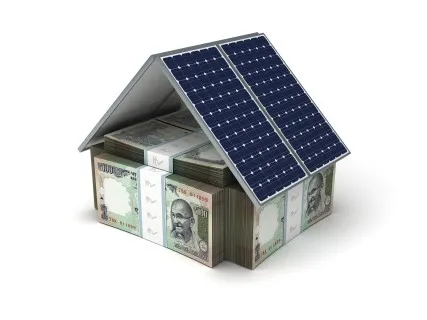
Solar park costs are on the rise in India
Solar park fees vary from $58,039/MW to $164,335/MW.
Solar parks are a vital piece to India’s solar future and were designed to reduce bottlenecks and bring down large-scale project development costs by allocating land and providing transmission infrastructure, big challenges for solar project development in India.
According to Mercom Capital Group, the government recently doubled down and increased the proposed solar park capacity from 20 GW to 40 GW and is providing financial support to the tune of Rs.81 billion (~$1.23 billion) in Central Financial Assistance (CFA) and $100 million (~Rs.6.5 billion) from the World Bank.
While solar parks have played an important role in lowering tariffs in recently conducted reverse auctions, our research is finding that costs are actually increasing, squeezing the margins even more in a highly competitive auction market.
Most of the developers have told Mercom that incomplete solar park infrastructure, exorbitant upfront fees, and not so transparent yearly charges are all adding to project costs with some developers calling for auctions outside of solar parks as they think it could be cheaper in some instances.
Here's more from Mercom Capital Group:
Even though all solar parks come under the same policy (solar parks are being developed in collaboration with state governments with Solar Energy Corporation of India (SECI) as the implementing agency), each solar park has a different fee structure which is leading to the varying in tariffs and project costs. In fact, two solar parks in the same state can have different fees. According to Mercom’s data, the solar park fee in India varies from Rs.3.73 million (~$58,039)/MW in Karnataka to Rs.10.58 million (~$164,335)/MW in Gujarat.
Land application fees (non-refundable one-time), upfront development charges (one-time), annual leases of land, and annual operation and maintenance (O&M) charges are the most common park fees or charges. However, developers are faced with differing stamp duties in each state and service taxes on all components. “Hidden charges end up inflating project costs,” commented one developer.
In each state or even in different areas in the same state, the topography and solar irradiation changes, and the distance from the substation also changes; all these lead to differences in park fees, stated a SECI official. If the park development agency or authority is spending more on construction of transmission infrastructure, land acquisition and levelling - it will obviously charge more, added the SECI official.
In response, developers said they understood that land lease charges and development charges can vary, but they were skeptical as to why operation and maintenance charges vary across states. That is an area they see where SECI or the implementing agency can make a change.



















 Advertise
Advertise





